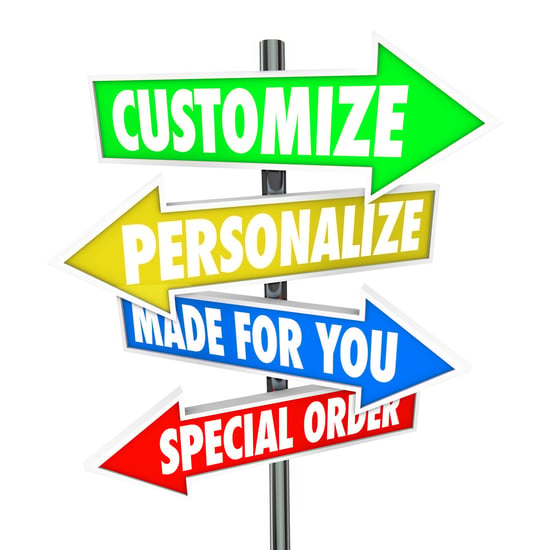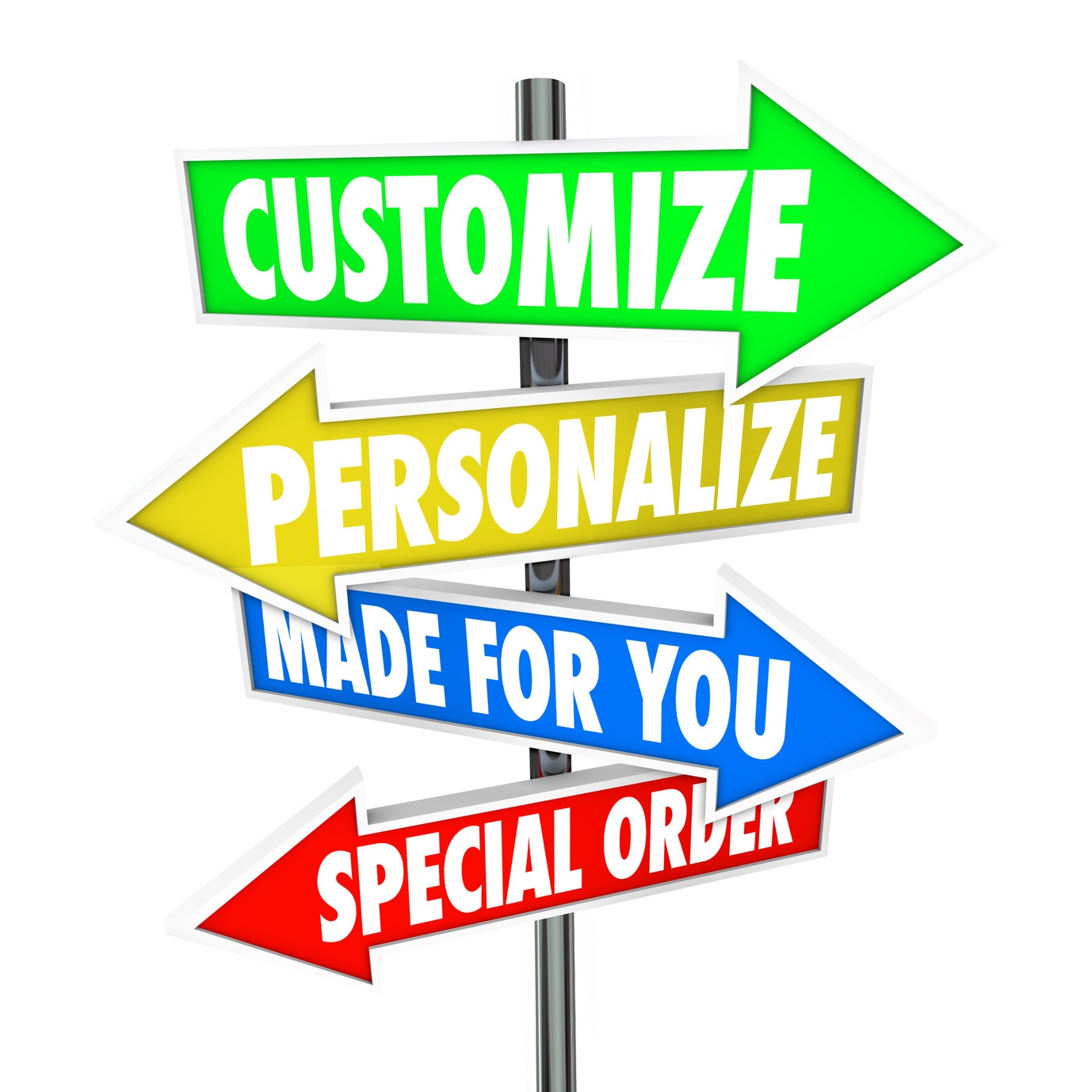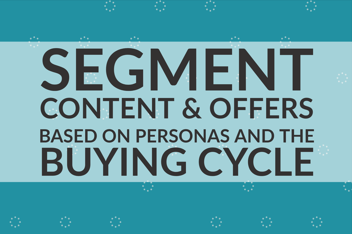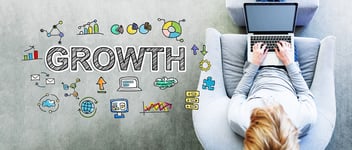3 Ways to Define The Customer Sales Cycle and Segment Marketing Efforts

Do all of your business contacts receive the same treatment?
It may sound like a trick question in our age of equality, but it really isn’t. You should not provide the same offers, the same emails, the same communication to all of your business prospects. Here’s why: They aren’t all looking for the same thing, and they aren’t all on the same timeline.
Even contacts who fit the same buyer persona should receive segmented offers and communication based on where they fall in the customer life cycle (or sales funnel or buyers’ journey).
Defining Customer Life Cycle Stages
Each company will have its own way of defining life cycles, depending on the complexity of its products or services, the industry, and whether it is a B2C or B2B business. Here are three different ways to look at the customer life cycle, sometimes also called the buyers’ journey. Each has its place and can help guide your decision-making as you segment your own contacts.
1. Simple customer life cycle: Cold, warm or hot
This simple three-step cycle provides an overview that could be applicable to nearly any business—even impulse purchases at the convenience store.
In the “cold” stage, prospects aren’t at all ready to buy. But that doesn’t mean you should ignore them; instead, provide useful information that they may remember at a later time. This might be the Facebook status comparing your energy drink to the industry leader: “7 of 10 energy drink users preferred the taste of JONES Juice to Red Bull!”
Warm prospects are considering their options: the customer walking into the convenience store thinking about a drink, but not sure what fits his needs today. That’s where he sees the display echoing that Facebook status, but complete with a picture of the sports star who endorses JONES Juice and an ingredient list that shows JONES Juice uses only organic ingredients, helping him solve the problem of trying to avoid artificial sweeteners. Now we’ve got him thinking more about an energy drink, and he walks to the cooler.
Hot prospect: Ready to buy an energy drink! So how do we clinch the deal? Shelf display with a 50-cent coupon. Sold!
So, that may not look quite like inbound marketing (because it isn’t), but the basic concept of a customer life cycle is similar across industries.
2. Inbound marketing complete customer life cycle
When we look more specifically at inbound marketing—using website content to attract visitors who convert into leads—the life cycle becomes more defined and echoes the sales funnel we use in creating content.
The sales funnel/life cycle/buyers’ journey begins with strangers, people who know nothing about your business yet. It is the “top-of-the-funnel” inbound marketing content that introduces them to your company and website: social media posts and shares, shared blog posts, or content they find on your site through an online search.
Strangers become visitors when they reach your website, where they encounter calls-to-action and landing pages. If they choose to complete a landing page form to access one of your offers, they are converted into a lead.
Through lead nurturing—an automated series of offers and emails—they are led toward the goal of a closed sale. Then they become customers.
The final level of the sales funnel and inbound marketing customer life cycle is made up of promoters: those satisfied customers who refer others back to you and speak highly of your business.
All of these life cycle/sales funnel stages require different content and communication to meet their needs and keep them involved with your company.
3. Inbound marketing specific customer life cycle
As I said, every business will have its own specific considerations in defining life cycle or buyers’ journey stages for internal use. Creating those life cycle definitions is one area in which marketing and sales need to be in alignment. If the two departments don’t agree on what each stage in the customer life cycle means, it will be difficult to have an efficient exchange of information and hand-off of leads from one department to the other.
Inbound marketing leader HubSpot uses the following stages in its own life cycle consideration: subscriber, lead, marketing qualified lead, sales qualified lead and customer.
(JONES is a certified HubSpot partner; if you’d like to learn more about HubSpot, request a demo and we’d be glad to show you what HubSpot can do for you.)
HubSpot’s life cycle stages take into consider specific interactions and qualifications.
-
Subscribers are those individuals who have already opted in to hear from the company periodically, as blog or newsletter subscribers.
-
Leads have taken the next step and filled out a form with more than just an email address, typically for some sort of content offer such as a case study or webinar.
-
Marketing qualified leads have shown greater engagement by accessing specific botton-of-the-funnel offers such as product demos, but aren’t quite ready for sales yet.
-
Sales qualified leads are worthy of a direct sales follow-up. (JONES defines sales qualified leads as having the right timeline, need, budget and fit for our solution. See our checklist.)
-
Opportunities are sales-qualified leads who are ready to buy.
-
Customers.
How would you define life cycle stages for your company?
What do you adjust for customer life cycle differences?
With your life cycle stage definitions in hand, you can plan a content strategy that includes offers for each stage along the way, along with plotting lead nurturing strategies to move prospects from one stage to the next.
Key places you can personalize content and conversation according to life cycle stage are:
-
Website: Return visitors who are leads should be greeted by name and shown CTAs for content for the next stage of the customer life cycle.
-
Emails: Automated lead nurturing emails should be tailored based on the prospect’s customer life cycle stage—informational and useful for those in the early stages, action-oriented for prospects who show signs of nearing a buying decision.
-
Offers: Calls-to-action on the website and in emails should be for content that becomes more specialized as the prospect moves down the sales funnel.
Find more on personalizing communications here: 7 Ways You Need to Personalize Your Marketing Efforts.
Customizing your business contact’s experience based on customer life cycle stage is a key component of using dynamic content in marketing. Learn more about how to incorporate personalization into many of your marketing tools in our ebook An Introduction to Using Dynamic Content in Marketing.
Stop treating everyone the same.
-1.png?width=1652&height=294&name=Jones(RGB)-1.png)









.jpg?width=352&name=4.10%20Blog%20Visitors%20vs.%20Subscribers%20vs.%20Contacts%20vs.%20Hot%20Leads_%20Which%20Are%20You%20Reaching_%20Copy%20(1).jpg)


